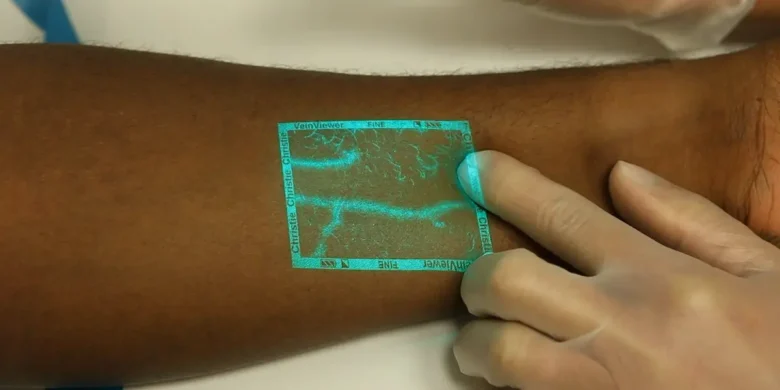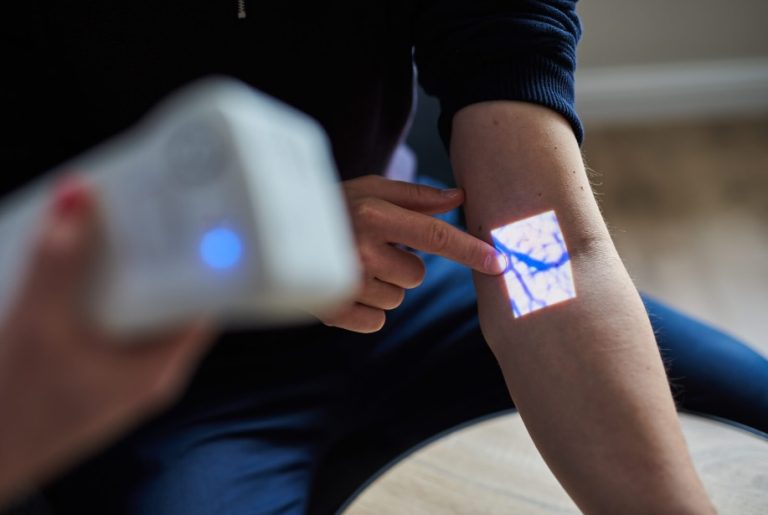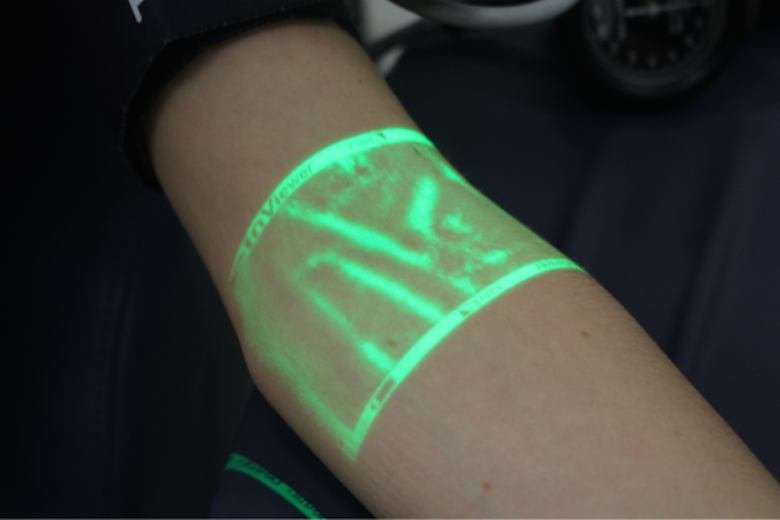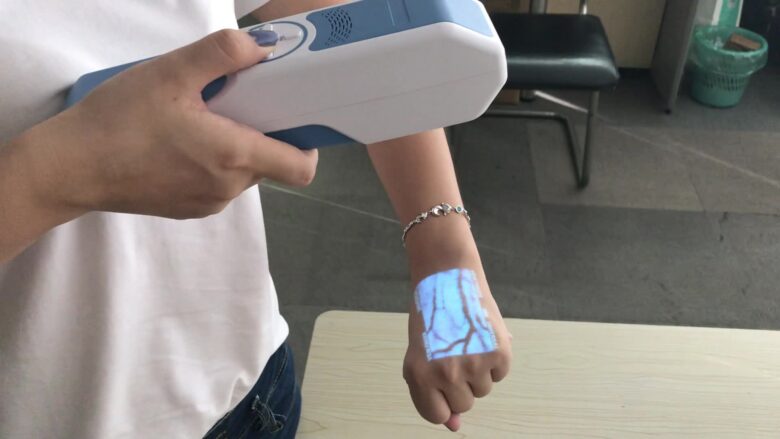If you’ve ever had blood drawn or an IV placed, you know that one of the most important (and sometimes difficult) tasks for the healthcare professional is to find a vein.
In order to make this process easier and less painful, many hospitals and clinics now use vein finders. But what are vein finders? How do they work?
In this blog post, we’ll take a look at vein finders and how they can help make your next blood draw or IV placement much easier. So, keep reading to learn everything you need to know about these amazing devices.
Contents
What is Vein Finder?
A vein finder is a device that uses light to create a real-time image of the veins below the surface of the skin. This image can be either projected onto the skin (external vein finder) or seen through a monitor (internal vein finder). The purpose of using a vein finder is to help place an IV catheter or draw blood from a patient with difficult-to-find veins.
How Does it Work?

Source: businessinsider.com
There are two main types of vein finders: near-infrared light absorption and Transillumination.
- Near-infrared light absorption works by shining near-infrared light onto the skin. The hemoglobin in the veins absorbs more near-infrared light than the surrounding tissue, so the veins appear darker than the surrounding tissue. Near-infrared light absorption devices usually have a viewing screen so that the clinician can see the image of the veins.
- Transillumination works by shining light through the skin. The veins appear as dark lines on a bright background because they absorb more light than the surrounding tissue. Transillumination devices usually have a viewing screen so that the clinician can see the image of the veins.
Some newer devices use both near-infrared light absorption and Transillumination to create a more accurate image of the veins.
Regardless of which type of device is used, all vein finders work by creating an image of the veins so that they can be more easily seen and accessed. This helps to ensure that IV catheters are placed in the correct location and that blood can be drawn from even difficult-to-find veins.
Benefits of Using a Vein Finder Device
There are many benefits associated with using vein finders, both for healthcare professionals and patients. Some of the most notable benefits include:
Improved patient outcomes:

Source: scoopearth.com
One of the biggest benefits of using vein finders is that it leads to improved patient outcomes. When healthcare professionals are able to quickly and easily access veins, it minimizes the risk of complications, such as hematomas, tissue damage, and infection.
Reduced procedure time:
Another benefit of using vein finders is that it reduces procedure time. This is particularly beneficial for procedures that require multiple needle sticks, such as blood transfusions and dialysis treatments.
Less pain for patients:
Another benefit of using vein finders is that it leads to less pain for patients. Because healthcare professionals are able to quickly and easily access veins, it minimizes the need for multiple needle sticks, which can be painful for patients.
Enhanced safety for healthcare workers:
Yet another benefit of using vein finders is that it enhances safety for healthcare workers. When needles are inserted into veins correctly on the first try, it minimizes the risk of needlestick injuries, which can expose healthcare workers to blood-borne pathogens like HIV and hepatitis B and C.
Are There Any Risks Associated with Using a Vein Finder?
No, there are no known risks associated with using a vein finder. These devices emit very low levels of near-infrared light, which has not been shown to cause any harm to humans.
However, it is important to note that Transillumination devices should not be used on patients who have implants or metal objects in their bodies (such as pacemakers) as this could cause damage to these objects. If you have any questions about whether or not a Transillumination device can be used on you, please speak with your healthcare provider prior to having your procedure. I’m personally using AimVein Go 2.0 vein finder and I can confidently say that it’s the best one so far.
Who Can Use Vein Finders | Uses and Applications

Source: techcrunch.com
While vein finders are mostly associated with blood draws, they have a wide range of potential uses in various medical procedures. Here are just a few examples:
Vein Finder Uses in Blood Draws
Vein finders are most commonly used in blood draws, as they help clinicians locate the best veins for inserting needles. This is especially important for people with difficult-to-find veins, such as elderly patients or those with small, delicate veins. Using a vein finder can help make the blood draw process quicker and less painful for patients.
Vein Finder Uses in IV Insertion
In addition to blood draws, vein finders can also be used to help insert IV catheters. This is helpful for people whose veins are difficult to locate or who have had previous unsuccessful attempts at IV insertion. By using a vein finder, clinicians can more easily see which veins are suitable for IV insertion and avoid ones that may be more difficult to access.
Vein Finder Uses in Surgery
Another potential use for vein finders is during surgery. During certain surgeries, such as those involving the hands or feet, it can be difficult to locate the patient’s veins. This can make it challenging to administer anesthesia or other medications intravenously. Using a vein finder can help surgeons more easily see the veins and avoid inadvertently puncturing other tissues.
Conclusion

Source: importanceoftechnology.net
Vein finders are a great way to help your patients feel comfortable and confident about their procedure. We hope you found this post helpful in understanding how vein finders work and the benefits they provide. If you have any questions, please don’t hesitate to reach out to us.
